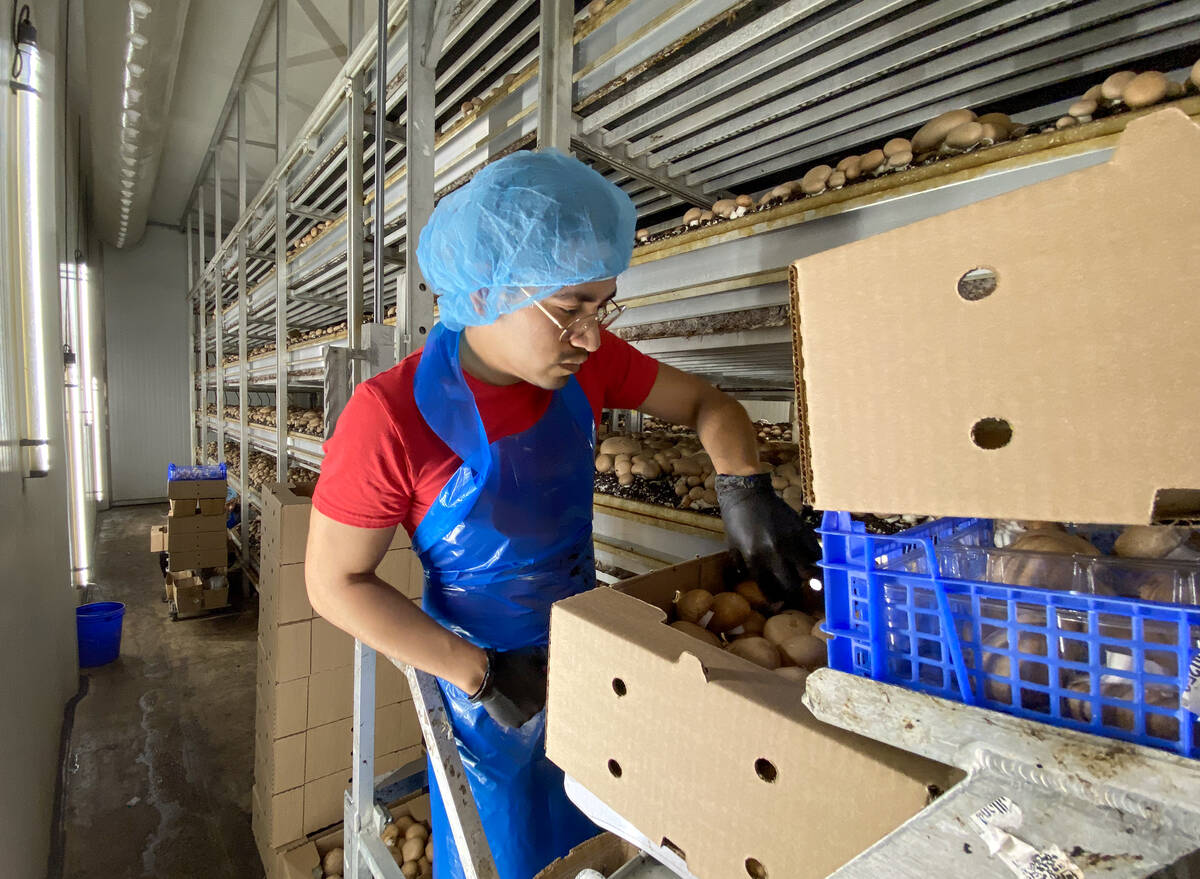Will the zaniness of 2020 and 2021 be repeated in the coming year? The uncertainty of the past couple of years makes annual predications tough.
According to Farm Credit Canada’s economics team, Canada’s agriculture sector has a lot going for it despite known and yet-to-be realized challenges.
Here are some of their ag predictions for 2022.
Read Also

Ontario’s other economic engine: agriculture and food
Ontario Federation of Agriculture president, Drew Spoelstra, says Ontario’s agriculture and agri-food sector should be recognized for its stability and economic driving force.
Macro-level factors

■ Inflation
Inflation and interest rates are the hot topics of the day, says J.P. Gervais, the organization’s vice-president and chief economist. That makes sense given the labour and supply disruptions seen since the pandemic began, and particularly those experienced last year. Current predictions are that inflation may subside in the second half of 2022, assuming supply issues stabilize, but Gervais cautions psychological factors are at play.
“It’s a bit of a self-fulfilling prophecy,” he says, referring to a phenomenon where the expectation of inflation causes businesses to pre-emptively raise prices, which in turn causes inflation rates to increase beyond what might have otherwise occurred.
■ Interest
The Bank of Canada’s job, in part, is to stem inflation rates via higher interest rates, which the institution is expected to do throughout 2022. The first benchmark interest increase is expected to bring the historically low rate of .25 per cent to .50 per cent. The Bank of Canada announced Jan. 26 that it would hold the rate at .25 per cent but signalled increases are coming.
By year’s end, the rate is expected to increase 1.25 per cent. Regardless, Gervais reiterates individual increases “don’t have to be just a 25-basis point increase.” It can be more. Businesses should plan accordingly.
■ The Loonie
Interest rates and oil prices are the most important factors for the international value of the Canadian dollar.
If interest rates rise faster in Canada than in the United States, demand for the loonie and its subsequent value increases. Whether this will occur is hard to say, though Gervais believes the pace of interest rate increases between the two countries will more closely align as the year progresses.
As for oil, he says there are significant doubts that oil-producing countries will be able to keep pace with heightened demand for petroleum as the pandemic winds down.
Overall, a loonie valued at .81 to .86 cents U.S. — and .69 cents to the Euro — is anticipated. Ongoing tensions around Ukraine could affect that, particularly if Russia limits natural gas exports to Europe.
Livesotck

■ Hogs
FCC principal economist Sebastian Pouliot says higher feed costs have characterized Canada’s hog sector through 2021. The share of cost of production held by feed is estimated to have risen from 50 to 58 per cent in a farrow-to-finish operation, for example. Drought conditions in Western Canada exacerbated input costs but eastern producers were less affected.
Increases in labour costs and other inputs such as feed additives are also a possibility. Managing backlogs, a particular problem in Quebec, involving 200,000 head, is another barrier affecting supply chains.
The year 2021 saw a rebound in hog prices, as well as a more typical price fluctuation pattern. Current indicators suggest the same for 2022. As for markets, 2021 saw price supports from significant exports to the United States, Mexico and the Philippines. The same is not the case for the Chinese market.
“In 2022 we cannot really count on China to support high prices,” says Pouliot. “Even in 2021 that wasn’t the case. China is not supporting the export market so much.”
■ Cattle
Canada’s beef sector is experiencing positive and negative pressures.
On one hand, says FCC manager and principal economist Craig Klemmer, beef processing has returned to pre-pandemic levels. Demand is strong and expected to remain so through 2022. Domestically, demand is being driven by a return of restaurant dining, and though grocery store demand is also strong, direct beef purchases have dropped, likely because of higher shelf prices.
As with the hog sector, feed costs have jumped significantly. Klemmer said it will be the number one concern for beef producers because profitability has been declining since mid-2020. A further shrinking of the national herd will put more upward pressure on a product in high demand.
Export restrictions due to case of BSE are also a concern. Trade with China and other Asian countries is important, though Klemmer says the recent resumption of trade with South Korea was positive.
■ Dairy
Demand for dairy is different. As Pouliot says, an anticipated increase in demand for many dairy products in 2021 did not come to fruition following an increase in demand earlier in the pandemic. Liquid milk in particular could see declining demand in Eastern Canada.
Dairy imports from the United States will increase again, as has been the case since 2019. The prospect of a higher-value loonie will increase American imports. Pouliot says the impact of a recent ruling on allocation of dairy import licences is not yet know, since the forthcoming allocation method remains unclear.
The cost of inputs is also a concern. Among other impacts, higher feed costs have resulted in higher farmgate prices, though inflation for dairy products overall has been lower than other commodities. Pouliot believes this suggests further increases could be absorbed without significant end-product price hikes.
Grains, oilseeds

High demand internationally and domestically, the scramble for shipping space, infrastructure-damaging weather events, skyrocketing input costs and a variety of other factors characterized the grain, pulse and oilseed market in 2021. Every factor has put pressure on the supply chain.
Prairie drought is still at play and will affect how growers approach the coming crop year. It is a notable domestic factor contributing to higher commodity prices. The 2021 farm revenue was roughly 20 per cent higher than the previous year and international demand remains strong. The global production of corn, soybeans and wheat is expected to increase in 2022, however, bringing a price decline.
“It’s going to take quite a bit of time for us to rebuild this infrastructure,” says Klemmer in reference to the damage caused by rain events in British Columbia, and the subsequent reduction in access to vital west coast ports. He expects slow improvements in global supply chains, softening costs and aiding system recovery.
Fertilizer, chemical, and other input costs are expected to dampen profits for the sector too. This will spur many to adapt cropping strategies by applying less nutrient, reducing seeding rates or planting lower-cost crops. Klemmer says there is a limit to the latter, given demand for livestock feed.
Other commodities
■ Potatoes
The ban on Prince Edward Island potato exports has been a major challenge. Markets must be found, though a lackluster 2021 American crop provides a void that Canadian potato growers could fill. The overall outlook looks positive thanks to the current imbalance between supply and demand.
■ Poultry
The price of poultry products is expected to keep up with changes in input costs. Overall demand is good, and data from 2021 and early 2022 is expected to show demand increases. Continued demand growth for poultry, as well as beef, is anticipated as supply chain issues are resolved.
■ Greenhouse vegetables
Profits in the greenhouse sector have gone up and 2021 prices were above the five-year average for most greenhouse products. The top challenge for operations is cost of production.
■ Small fruit (e.g., blueberries)
Prices on a global scale are low but locally driven demand is strong and will continue upward.
FCC’s staff provided this information during its 2022 Farm Ag Economic Outlook on Jan. 25.













